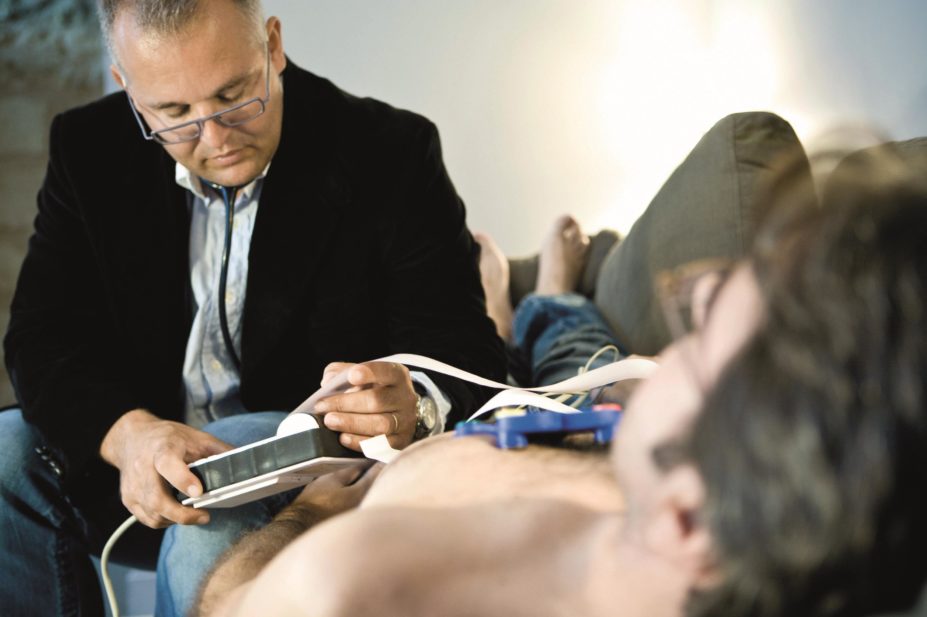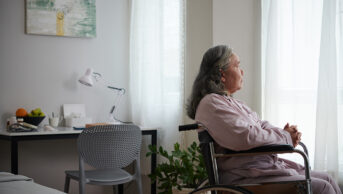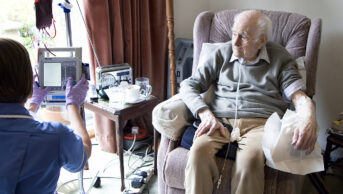
PhotoAlto / Alamy Stock Photo
Acute trusts could reduce their deficit and free capacity by carrying out more clinical care in the home, a report suggests.
An analysis of data on ‘virtual wards’ in four NHS acute trusts, run by private provider Healthcare at Home, concludes that there are potential savings of £120m if all trusts offered care at home on the same scale.
According to health analytics company MedeAnalytics, there were 9,000 patient stays on a virtual ward – care provided at home under a consultant – compared with more than 4 million patients cared for solely in hospital, suggested that 500,000 bed days could be saved each year.
Christine Outram, chair of the expert panel and chair of The Christie NHS Foundation Trust, which offers some chemotherapy treatment to patients at home, says there has been a need for data to convince the NHS to provide care in this way.
“If you look at your typical busy NHS trust, they have an awful lot going on and huge pressures on their service,” she says. “We wanted to set out the evidence about the safety, outcomes and money that could be saved with more care at home.”
The figures are published in ‘There’s no place like home’, a report by an independent expert panel set up by Healthcare at Home, who in addition to running virtual wards also provide specialist pharmacy services.
Outram says it will take careful planning for trusts to achieve the level of savings estimated in the report because without closing capacity trusts will just expand.
“There needs to be carefully thought out protocols and agreements in place,” she says. “But once people have been involved in it, they become passionate advocates.”
Figures from October 2012 to May 2016 show that by caring for patients on virtual wards, the four trusts freed up 62,040 inpatient bed days.
In theory, if 80% of that extra capacity was used, an additional 1,470 hip replacements could be carried out or 36 beds could be removed, the report states.
The analysis suggests that being on a virtual ward is particularly effective for respiratory system, urinary tract and nervous system conditions.
Sir Jonathan Asbridge, clinical director of Healthcare at Home, says the recovery at home service helped to make the flow of patients “much more efficient”.
But Allan Karr, ex-chair of the National Homecare Medicines Committee (a subgroup of the National Pharmaceutical Supply Group), warns that it is early days in the evaluation of such schemes.
“More research is needed both in terms of governance arrangements and, from a financial perspective, the alternative options that might be available,” he says. “We also need to make sure that costing models are robust.”
Carol McCall, who helped develop the Royal Pharmaceutical Society’s professional standards for homecare services, says many NHS trusts are looking at these types of services or offering them already on a smaller scale, and that they offer an opportunity for pharmacy to get involved.
“In the professional standards we set out that the pharmacist should have oversight of any medicines related homecare,” she says. “The important thing is doing it properly and the Hackett report said pharmacy should be involved in coordinating this kind of service.”
You may also be interested in

Patient organisations call for simplified e-prescribing in homecare medicines services

Updated RPS professional standards aimed to ensure high-quality homecare services across the UK
